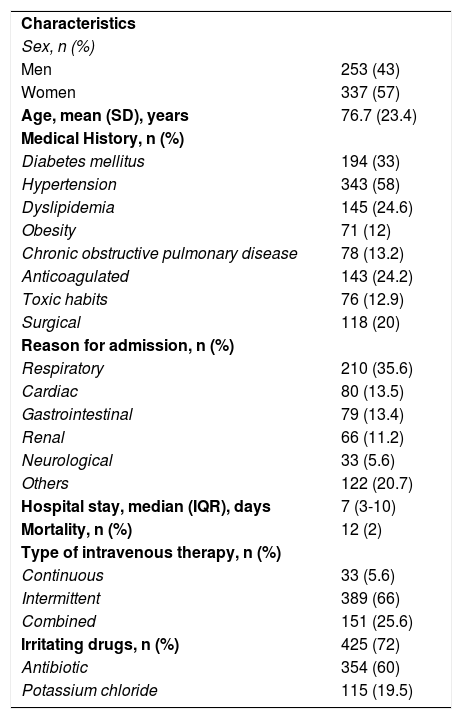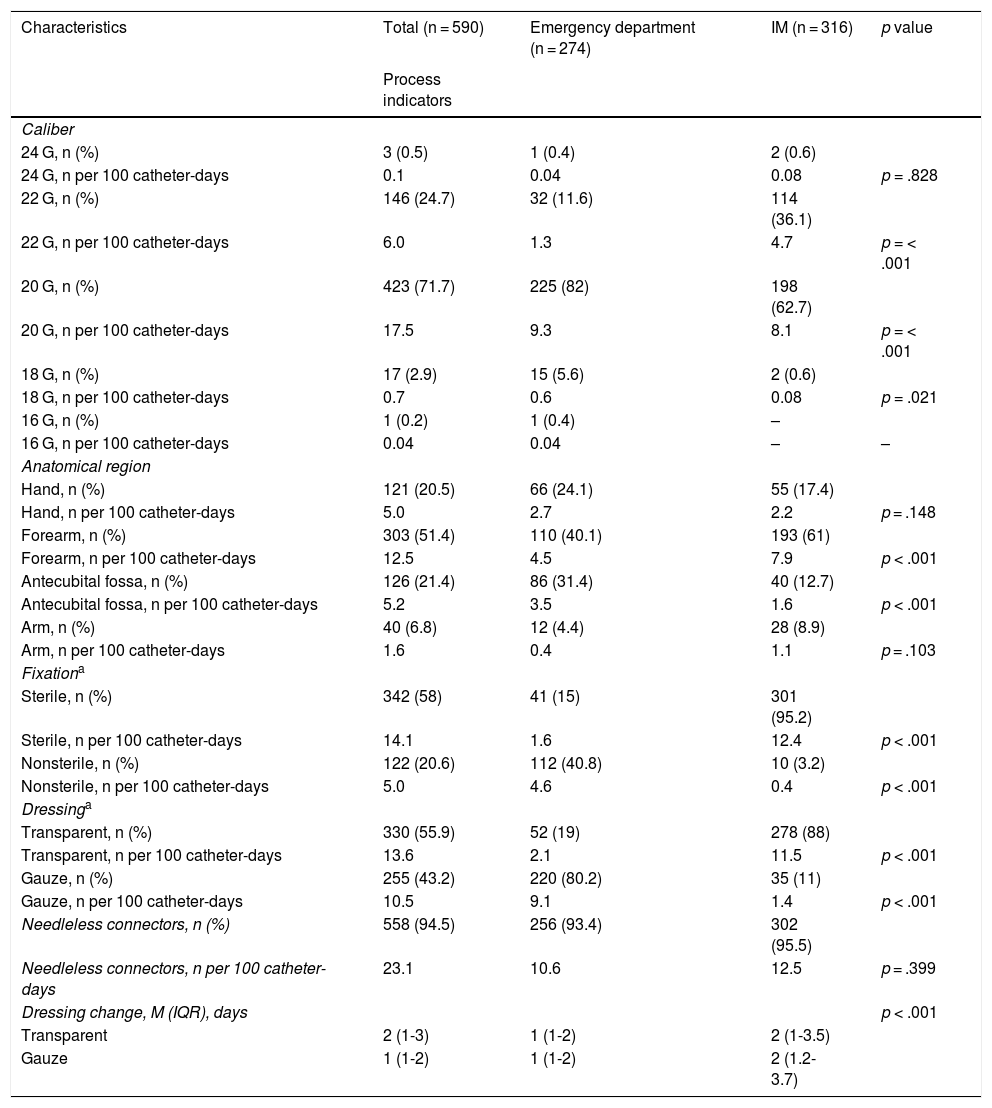To analyse compliance with the recommendations on the insertion-maintenance of peripheral venous catheter (PVC) and the incidence of complications according to the healthcare department that inserted the PVCs.
Patients and methodsWe conducted a prospective cohort follow-up study of PVCs, from their insertion in the emergency or internal medicine (IM) department until their withdrawal.
ResultsWe monitored 590 PVCs, 274 from the emergency department and 316 from IM. In terms of compliance with the process indicators, there was a cannulation rate in the antecubital fossa of 3.5 and 1.6 per 100 catheters-day (p < .001) in the emergency and IM departments, respectively. The sterile placement rates were 1.6 and 12.4 (p < .001), and the rate for transparent dressing was 2.1 and 11.5 (p < .001) per 100 catheters-day in the emergency and IM departments, respectively. The complications rates showed no differences between the departments. The most common complication was phlebitis (95 cases, 16.1%).
ConclusionsCompliance with the insertion-maintenance recommendations for PVC showed differences between the departments; however, the incidence of complications was similar.
Analizar la adherencia a las recomendaciones de inserción-mantenimiento del catéter venoso periférico (CVP) y la incidencia de complicaciones según el servicio asistencial de inserción.
Pacientes y métodosEstudio de cohortes prospectivo de seguimiento del CVP desde su inserción en Urgencias o Medicina Interna (MI) hasta su retirada.
ResultadosSe monitorizaron 590 CVP: 274 de Urgencias y 316 de MI. Entre la adherencia a indicadores de proceso destaca la tasa de canalización en fosa antecubital de 3,5 vs. 1,6 por 100 catéteres-día (p < 0,001) en Urgencias y MI, respectivamente. La tasa de fijación estéril fue 1,6 vs. 12,4 (p < 0,001) y el apósito transparente de 2,1 vs. 11,5 (p < 0.001) por 100 catéteres-día en Urgencias y MI, respectivamente. Las tasas de complicaciones no mostraron diferencias entre los servicios. La más frecuente fue la flebitis 95 (16,1%).
ConclusionesLa adherencia a las recomendaciones de inserción-mantenimiento del CVP mostró diferencias entre servicios; sin embargo, la incidencia de complicaciones fue similar.
Article
Diríjase desde aquí a la web de la >>>FESEMI<<< e inicie sesión mediante el formulario que se encuentra en la barra superior, pulsando sobre el candado.

Una vez autentificado, en la misma web de FESEMI, en el menú superior, elija la opción deseada.

>>>FESEMI<<<








